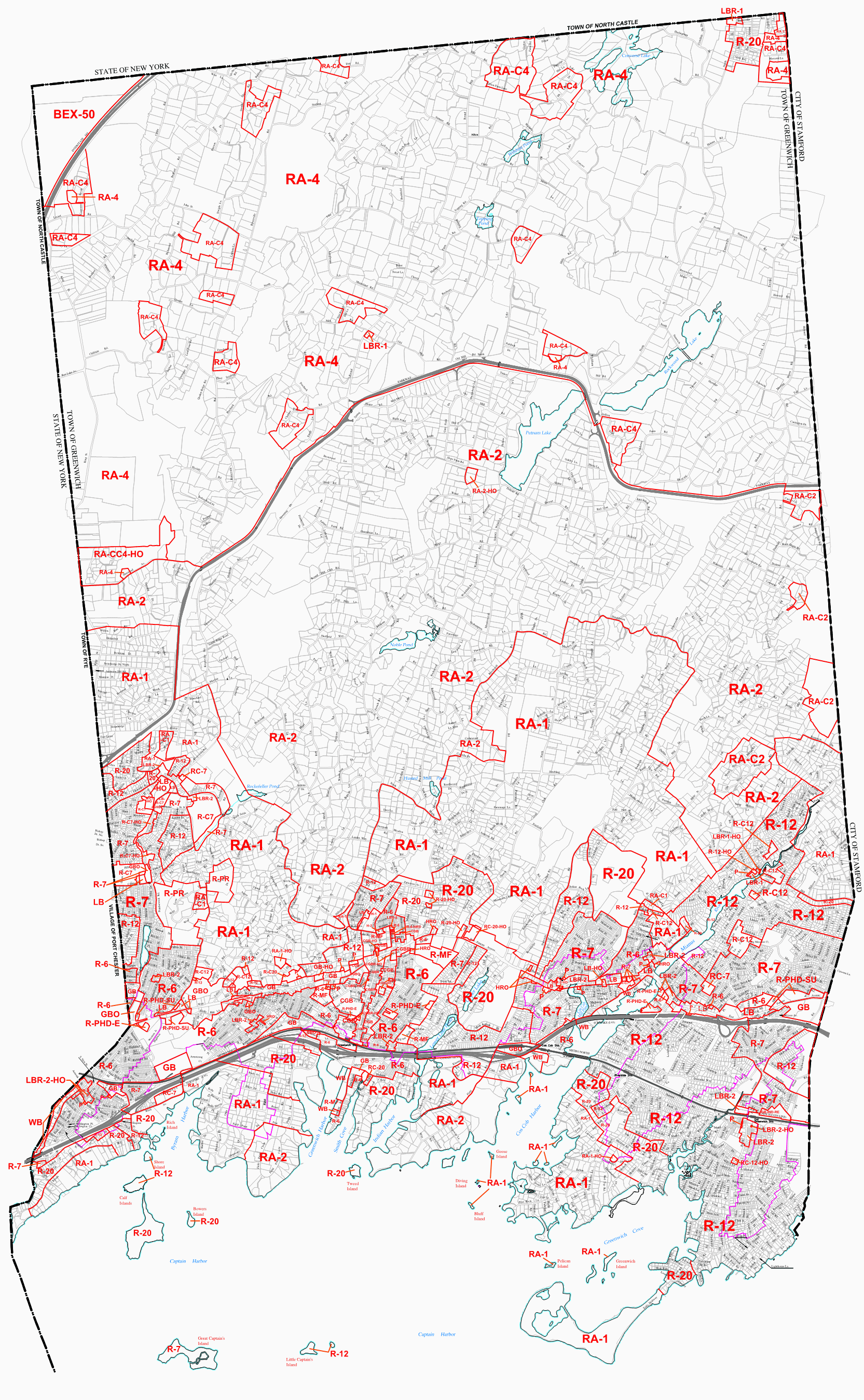
By Mark Pruner

How to Actually Create Affordable Housing in Greenwich
I’ve been looking into the very controversial SB 1024 and believe that it will destroy more affordable housing than it creates, while causing lots of damage to towns and cities across the state. The one group that will be greatly aided by the bill if enacted are developers of mid to large size developments.
We have lots of good local developers who work under a difficult situation
Now, lots of developers get a bad rap. They are entrepreneurs with a vision who put their own money at risk to build something better. The system they work under, particularly now, is difficult and risky. Yes, they usually make a profit, but I don’t think there is anything wrong with that. The good thing is that our local developers generally want to build something good for the community. Multiple times in meetings, I’ve heard developers say, “I can build that, and I’ll make money, but it’s not what I want to be known for. Building cheap and lowering values is a negative sum game for them.
The system these developers work with too expensive, takes to long, is too balkanized, too adversarial and is way too uncertain. All of these factors drive up costs, that give value to buyers. Amazingly, SB 1024 makes things much easier and will result in something much worse. It’s proponents actually think that this bill will only make small incremental changes and can’t seem to see what the big deal is. They make the false assumption that if we build more units, more supply will drive prices down and lower prices will lead to greater diversity in towns and cities.
The problem with this approach is that the New York City metropolitan statistical area is 20.2 million people according to the census bureau. So, Greenwich’s 62,000 people represent 0.3% of that population and an even smaller part of the residential units in the NYC MSA. We have essentially unlimited demand for houses.
21st Century blockbusting
What this bill does is give major financial incentives to developers, and particularly out-of-town developers, that can build big, cheap and fast, to build quick and move onto another town where they aren’t known.
These developers are not going to build affordable units and SB 1024 doesn’t require that they do so. It should really be called the DevelopCT bill. They are going to build as big as they can, with as many units as they can. The result is likely to be a brief glut of high-end apartments, that instead of renting for $12,000 – $15,000 per month will rent for $9,000 – 12,000 per month, not most peoples idea of affordable apartments.
The one way that the proponents could accomplish their goal would be through the uglification of Greenwich, which I call legal block busting. In this 21st version of blockbusting, the developer goes in and tells all the folks on the block that he’s about to build this big, apartment building, or two or three of them, right next door to them. He points out that once these are completed, the streets are going to be blocked with cars, since under SB 1024 there is little or no onsite parking.
While he says that’s the bad news, the good news is if you sell now, I, the developer, can pay you a premium, since I now can build multiple units on or lot in what was a one family zone. Unfortunately, if you don’t sell to me now, the 50% limit on this type of development is going to kick-in and you’ll be stuck on a congested street, surrounded by over-sized apartment buildings with no ability for you to do the same. Your house is going be worth less, as no one will want to build a nice house in this soon to be congested, neighborhood, so sell now and make more money.
Loss of affordable and historic homes
The other issue is that many of these houses and duplexes that are going to be torn down are presently some of our more affordable units. The effect of this bill would therefore be to decrease the number of affordable units, while creating a glut of high-end units. For homeowners who stay, in their older and often historic homes they are likely to their home values fall. Bottomline, more high-end rentals, fewer moderately priced houses and duplexes, historic homes torn down for new multi-family rentals and more traffic congestion in already congested areas.
Some proponents are calling such visions alarmist, but the economic incentives are in the bill and I don’t see any limitations other than a preliminary injunction from the superior court to stop this kind of development. The bill gives all developers approval as a matter of right. I don’t see any legal impediment to dozens of these projects starting up soon.
For alarmist, how about sewer lines and our one sewer plant over-flowing as the bill proposes lower standards for sewer volumes. That I do believe is alarmist, and I don’t think it is likely to happen. I discussed several other worse options that this bill would allow, but I really don’t want to give people even more profitable ideas on how they can create even worse problems that what’s described here.
Some reasons we need affordable housing
David Ogilvy, several years ago, when we were on working on a deal together, told me the most important thing is to try to always do what’s best for the town. In the long run everyone is better off. I am a strong believer in more affordable housing. I moved here in 1967 and the town is not what it was then. We are seeing more and more high-end units replacing our more modest homes. Our volunteer fire companies are having trouble finding enough people. The over-scheduling of adults and kids and the lack of really free time for everyone.
We are seeing a less diverse range of means, but not along racial and ethnic lines. Check out the United Ways’ just published online 2021 Greenwich Needs Assessment (https://greenwichunitedway.org/needs-assessment). It’s an excellent summary of the issues that are really facing Greenwich. It points out that our minority population is actually up a little.
While we have some very wealthy residents, the United Way has also pointed out that 7% of our residents live below the poverty line and an amazing 22% fall into a group called Asset Limited, Income Constrained, Employed. These are folks earn more than Federal Poverty Level, but don’t have significant savings and just barely meet their basic needs. They have little money for any emergencies and are unable to handle even a short period of unemployment. In Greenwich this group is 22% not that far below the state-wide percentage of 27%.
We do have housing for these folks, it’s not always good housing, but people upstate would be surprised that 29% of the residents in Greenwich are struggling to meet even a basic living standard. Many of these folks are the ones that make this town work in town government, local businesses, our charities, religious institutions and volunteering. They are an important part of the town and we need to have affordable housing available for them.
What is the law now as to affordable housing?
The main statute promoting affordable housing in Connecticut is Connecticut General Statute 8-30g. This is the statute that allows developers to appeal denials of affordable developments by local planning and zoning committees, if the town doesn’t have at least 10% affordable housing as defined in the statute. In court, the town can not argue that the development exceeds zoning limitations. The court has to permit the development unless the proposed development would endanger, public health, safety, or other matters such as the environment.
The law presently has two problems. First for a development to be considered an affordable development:
(1) 15% of the units must be deed restricted to households earning 60% or less of the area median income (AMI) or state median income (SMI), whichever is less, and
(2) 15% of the units must be deed restricted to households earning 80% or less of the AMI or SMI, whichever is less.
To meet the 80% state median income the renter can’t make more than $42,000 per year and at 80% the lower state-wide income limitation is $56,000. By using 60% and 80% of the state median many projects that would otherwise work in Greenwich don’t generate enough income to be viable commercial developments. These state-wide median based percentages exclude our first-year teachers, firefighters and police officers, since their starting salaries are little above the 80% statewide average.
We should be able to use the local area income, which would allow for much higher rents and make more projects viable. For folks that are resistant to affordable housing, the statewide income standard means that 8-30g has resulted in minimal affordable housing in Greenwich. It’s a feature, not a bug in the law for these folks.
The other problem is that in calculating whether a town has met the affordable housing 10% minimum much of the affordable housing in a town is not counted. The statute only counts government-assisted housing and low-income houses, mobile homes and accessory apartments that are deed restricted as affordable for 40 years.
At the present time 5.3% of our housing qualifies under this restrictive definition. This is 1,371 units out of a total of 25,631 housing units in town. Our Planning and Zoning Commission and Greenwich Communities (formerly called the Housing Authority) are to be congratulated for having this many units that meet the state requirement.
How do we create more affordable housing?
The biggest problem by far is that land in Greenwich is very valuable and the land around the train station and along the Post Road are particularly valuable for commercial businesses. To make units affordable you have to have either, more units per acres, lower land cost, or free land
Our presently affordable housing law, 8-30g, allows for greater density, but the developer gets 2.3 regular units for every affordable unit. At the present time we are 1,200 affordable units short under the 10% statutory definition. This means that we would actually need 4,000 units in 8-30g compliant development to net 1.200 affordable units.
Count all affordable housing
To my mind, two things should be done. First, everything that meets the 80% local standard should be counted toward the percentage. For units that can meet the 50% standard, they should be counted as 1.5 units. This includes all market rate units, since some of our rentals in town actually meet these limits. Also, our accessory apartments could be built to meet these standards. Property owners that are willing to rent out their properties at these lower limits should get a property tax break.
Second, the town should build, or take over, rental housing that is 100% affordable. Why build 2.3 market units just to get one affordable unit. While it would be highly controversial, these units could be built on state or town land saving the cost of the land. A few large developments tucked away to my mind would be better alternative than lots of mid-sized buildings with one or two affordable units.
For a really controversial proposal, the town could purchase presently existing company housing from the hospital, private schools and other facilities giving these institutions an infusion of cash and us a big boost in affordable housing. (I don’t say it’s likely, but when your write a column or propose legislation you can include anything you want.)
Have the state donate land
We could also get the state to donate the air rights at the Greenwich railroad parking lot and some of the rights-of-way along I-95 for moderate cost housing for local workers that can’t afford the going rates, particularly when they are starting out.
A Housing Trust Fund
Planning & Zoning also has an excellent idea which is to create a not-for-profit Housing Trust Fund to be financed with private money, but available to help assist some public housing projects. Companies could get housing for employees; individuals could get tax deductions and the town could meet its requirement for 10% affordable housing set out in 8-30g.
To be clear there is no 10% goal in the SB 1024, so unless that fails to pass or can be amended to include such a provision, we could still end up with the nightmare of uncontrolled development.




